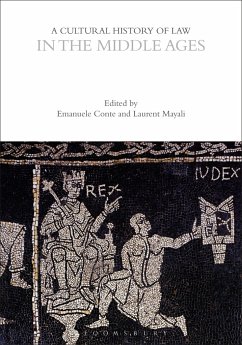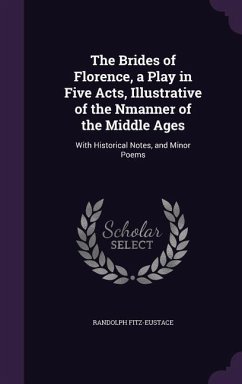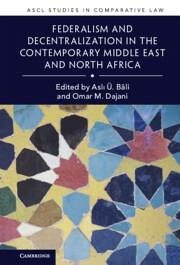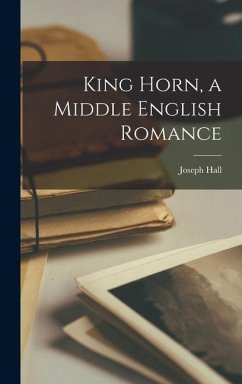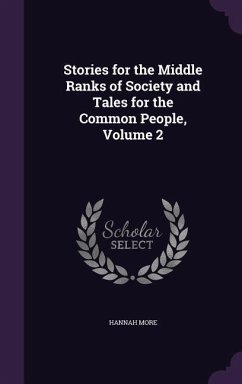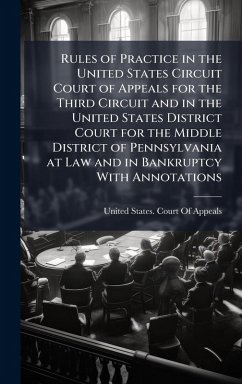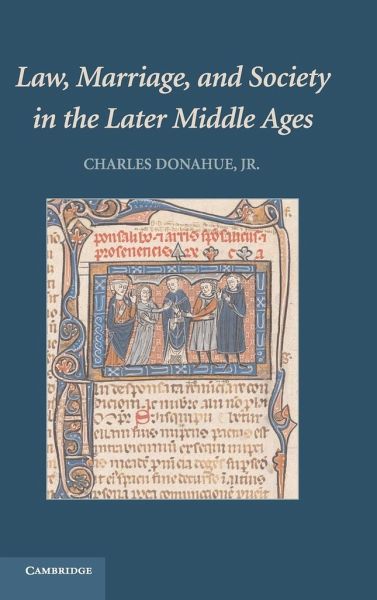
Law, Marriage, and Society in the Later Middle Ages

PAYBACK Punkte
54 °P sammeln!
Marriage litigation in York, Ely, Paris, Cambrai, and Brussels during the medieval period.This is a study of marriage litigation (with some reference to sexual offenses) in the archiepiscopal court of York (1300(?)1;1500) and the episcopal courts of Ely (1374(?)1;1381), Paris (1384(?)1;1387), Cambrai (1438(?)1;1453), and Brussels (1448(?)1;1459). All these courts were, for the most part, correctly applying the late medieval canon law of marriage, but statistical analysis of the cases and results confirms that there were substantial differences both in the types of cases the courts heard and th...
Marriage litigation in York, Ely, Paris, Cambrai, and Brussels during the medieval period.
This is a study of marriage litigation (with some reference to sexual offenses) in the archiepiscopal court of York (1300(?)1;1500) and the episcopal courts of Ely (1374(?)1;1381), Paris (1384(?)1;1387), Cambrai (1438(?)1;1453), and Brussels (1448(?)1;1459). All these courts were, for the most part, correctly applying the late medieval canon law of marriage, but statistical analysis of the cases and results confirms that there were substantial differences both in the types of cases the courts heard and the results they reached. Marriages in England in the later middle ages were often under the control of the parties to the marriage, whereas those in northern France and southern Netherlands were often under the control of the parties' families and social superiors. Within this broad generalization the book brings to light patterns of late medieval men and women manipulating each other and the courts to produce extraordinarily varied results.
Table of contents:
1. The background rules and institutions; 2. Lying witnesses and social reality: four English marriage cases in the high middle ages; 3. Statistics (?)1; the court of York, 1300(?)1;1500; 4. Story patterns in the court of York in the fourteenth century; 5. Story patterns in the court of York in the fifteenth century; 6. Ely; 7. Paris; 8. Cambrai (?)1; the courts and the numbers; 9. Cambrai and Brussels (?)1; the content of the sentences; 10. Divorce a mensa et thoro and salvo iure thori (separation); 11. Social practice, formal rule, and the medieval canon law of incest; 12. Broader comparisons: English and Franco-Belgian marriage cases in the later middle ages and a glimpse at the rest of western Europe; Epilogue and conclusion.
This is a study of marriage litigation (with some reference to sexual offenses) in the archiepiscopal court of York (1300(?)1;1500) and the episcopal courts of Ely (1374(?)1;1381), Paris (1384(?)1;1387), Cambrai (1438(?)1;1453), and Brussels (1448(?)1;1459). All these courts were, for the most part, correctly applying the late medieval canon law of marriage, but statistical analysis of the cases and results confirms that there were substantial differences both in the types of cases the courts heard and the results they reached. Marriages in England in the later middle ages were often under the control of the parties to the marriage, whereas those in northern France and southern Netherlands were often under the control of the parties' families and social superiors. Within this broad generalization the book brings to light patterns of late medieval men and women manipulating each other and the courts to produce extraordinarily varied results.
Table of contents:
1. The background rules and institutions; 2. Lying witnesses and social reality: four English marriage cases in the high middle ages; 3. Statistics (?)1; the court of York, 1300(?)1;1500; 4. Story patterns in the court of York in the fourteenth century; 5. Story patterns in the court of York in the fifteenth century; 6. Ely; 7. Paris; 8. Cambrai (?)1; the courts and the numbers; 9. Cambrai and Brussels (?)1; the content of the sentences; 10. Divorce a mensa et thoro and salvo iure thori (separation); 11. Social practice, formal rule, and the medieval canon law of incest; 12. Broader comparisons: English and Franco-Belgian marriage cases in the later middle ages and a glimpse at the rest of western Europe; Epilogue and conclusion.






